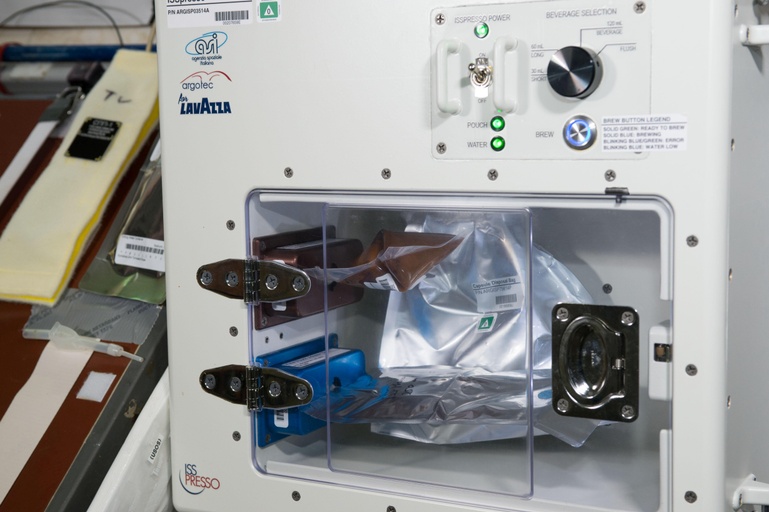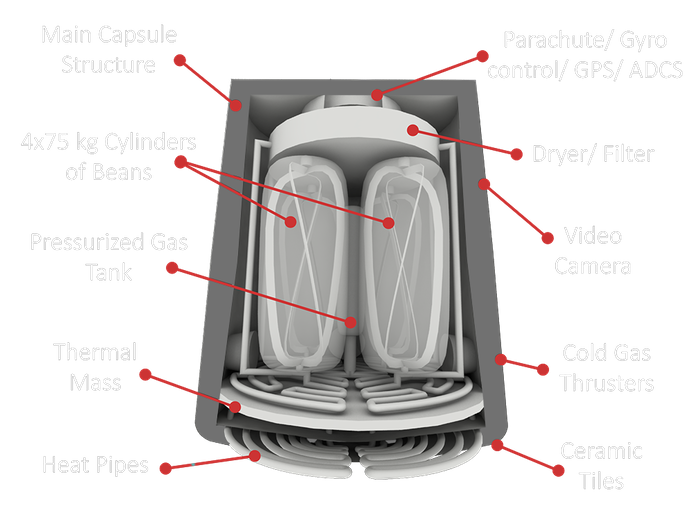Space espresso for space tourists or using re-entry heat to roast coffee beans for Earth.
Updated: 2024-02-24
Created: 2018-11-01
Applications
- Hot beverages for astronauts and space tourists.
- Provide the comforts of home.
- Could lead to new or improved brewing methods and techniques on Earth.
- Popularize microgravity applications.
- Roasting coffee beans in space for more even heat transfer.
Why & Solution
Crew members on long-duration space missions frequently miss the comforts of home, from favorite meals to a fresh cup of coffee. ISSpresso is not much larger than a typical Earth-based espresso machine, and produces espresso, broth or tea.1
ISSpresso is the first capsule-based espresso system able to work in the microgravity and extreme conditions of space.
Argotec and Lavazza worked together with the Italian Space Agency (ASI), in a public-private partnership, to bring the authentic Italian espresso into the International Space Station (ISS).2
Argotec has already patented innovative technologies capable of eliminating the coffee and water deposits generated by machines on Earth, thus reducing water waste by up to 30%. ISSpresso as an onboard system of the Space Station and no longer an Italian experiment. It will remain on the Station and the resources needed to keep it operational will be provided by NASA.3
Companies
Argotec page at Factories in Space
ISSPRESSO
Public-private partnership to bring the authentic Italian espresso into the International Space Station (ISS).
In fact, the crew has successfully tested the capsule-based espresso machine ISSpresso created by Argotec for Lavazza — in a partnership with the Italian Space Agency (ASI) — which on 3 May 2015, during the Italian Futura mission, allowed Samantha Cristoforetti to drink the first espresso in micro-gravity conditions inhistory.
Space Roasters page at Factories in Space
Using re-entry heat to roast coffee beans on a suborbital flight.
Earthly Solution Risk
Brewed in space and will be consumed in space.



